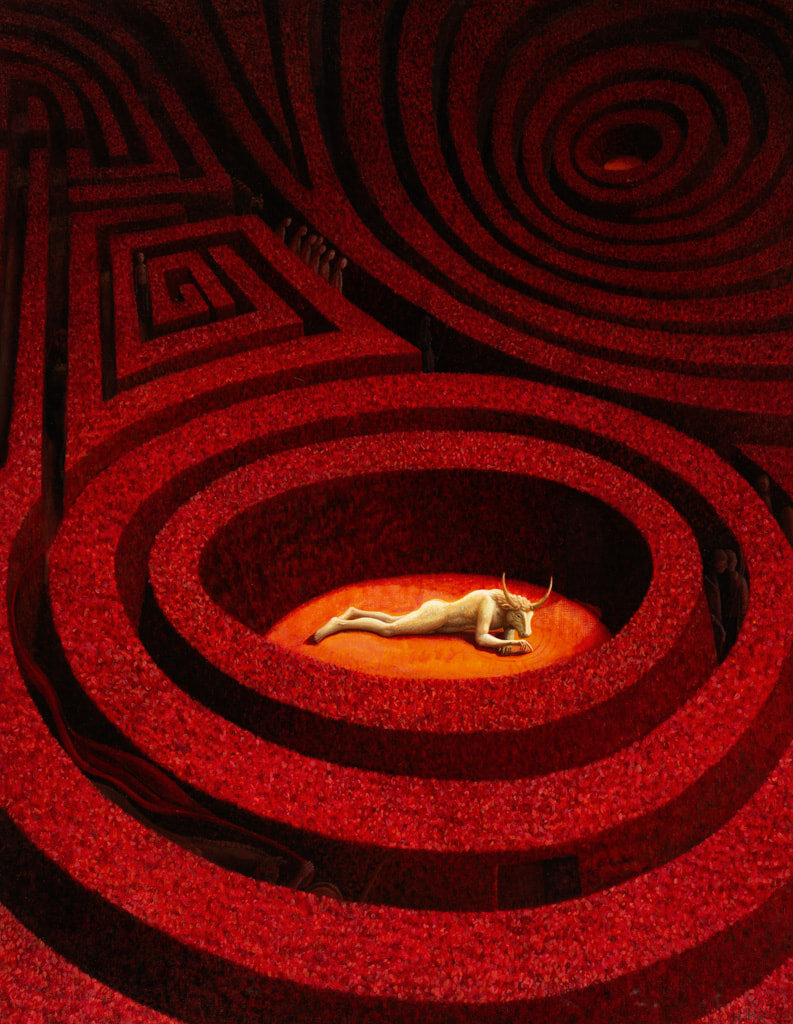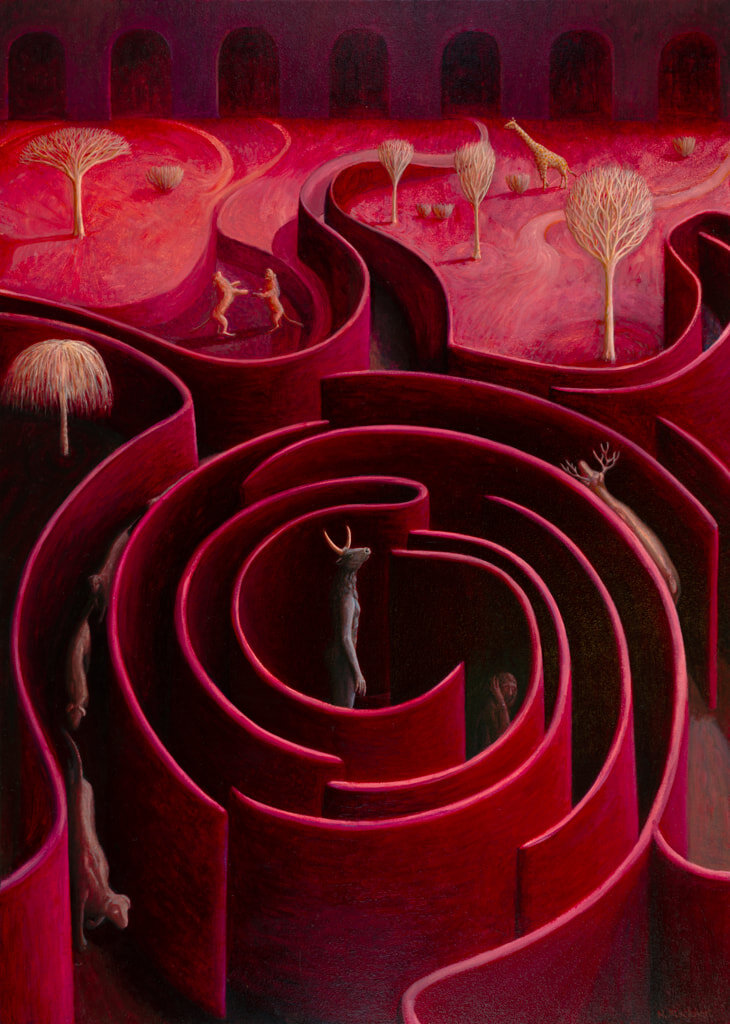Beasts @ Arusha
‘Beasts’ was the last exhibition I visited in 2020, a year that was itself pretty beastly in what it contained. Or didn’t contain – the chaos, it seems, has already spilt violently over any calendar-imposed edges. I was the only person in the gallery apart from the girl sat at the front desk, and once the door closed on the noise of the street the silence was only disturbed by my footsteps and her fingers tapping lightly on her laptop keys.
Twenty-one of Helen Flockhart’s oil paintings hung on the walls of Arusha’s recently refurbished interior. They are fantastical pieces: each invokes a mythical context with a vibrancy that stares you in the face, but some of them offer a sincerely human solemnity. Facial expressions border on indifference. Flockhart’s women in particular seem to embody their predicaments with graceful and stoic resignation; Eve, biblical blueprint for the tempted and fallen woman, does not even afford the serpent a glance. To me, her indifference does not feel like an act of defiance or rebellion – the impostor of paradise and enemy of mankind is simply of no interest to her. She’s busy, lounging on the back of a zebra. When a relation of her improvised chaise lounge is under attack, a scene eerily flanked by Adam and the recurring serpent, she turns her head and watches the sky. She’s clearly thinking about something else.
Helen Flockhart, COME INTO THE GARDEN, 2019
Oil on linen, 50 x 80 cm
I think that this is powerful in itself. Despite her biblical origins, the centuries of regurgitation and mythologising that have followed and the plush, dreamlike environment she inhabits on canvas, Flockhart’s Eve knows exactly what we know. She knows that her temptation will mummify and bury her at the heart of the catacombs of humanity’s wanton women. She knows that she is central to a legacy, grasped and spun out by men, from which women are yet to be exonerated. Her clairvoyance allows her to acknowledge what the annals of patriarchy have made inevitable, and her countenance remains unbothered – after all, there’s nothing that she can do about it now. So, she asks us silently, what are you going to do about it?
The Minotaur’s legacy is treated with similar tenderness in these paintings. Born from the sexual union of Pasiphae and the Cretan Bull in Greek mythology, the Minotaur was confined to a life of disgrace and isolation at the centre of an elaborate labyrinth. You don’t need to know about the mythical story behind Flockhart’s Minotaur paintings to see that she is sympathetic to the creature: a babyish minotaur plays with a ball of string in ‘Asterion’; in ‘Reckoning’, he looks wistfully upwards and out of his prison; in ‘Labyrinth’ he lies on his stomach, tracing labyrinthine patterns on the ground. Six of Beth Carter’s sculptures also featured in the exhibition, and her crouching Minotaur is remarkably meek: he squats gently over a book, and I remember treading lightly so as not to disturb him. A far cry from the violent and bloodthirsty monster that Greek myth has made him out to be, the Minotaur I encountered at Arusha was harmless, trapped and even lonely. In an interview with The Fleming Collection, Flockhart elucidated: ‘I really empathise with the Minotaur, his tale was quite poignant. He didn’t ask to be born, but he was born with an insatiable lust for human flesh and was incarcerated for his whole life.’
Her paintings are kind to the likes of Eve and the Minotaur where mythology - Christian, Greek, or otherwise - has not been. Although there is of course no modern Minotaur around to take a beating, women are still shackled to Eve’s legacy. Amongst countless examples, a misogynistic cherchez la femme blame culture has most recently seen unjustified abuse launched at Meghan Markle, blaming her entirely for the transatlantic phenomenon now commonly referred to as ‘Megxit.’ Will this be the year that the media starts being kinder to women?
Helen Flockhart, EVE, 2019
Oil on board, 23 x 30.5 cm
2021 will be full of its own beasts, not to mention an ongoing pandemic, and in a way our predicament places us at the centre of our own labyrinth. The way out is uncertain – but, unlike the Minotaur, we do still have each other.
‘Beasts’ closed on 20th December, but you can see the artworks here.
Words: Alice Keeling




